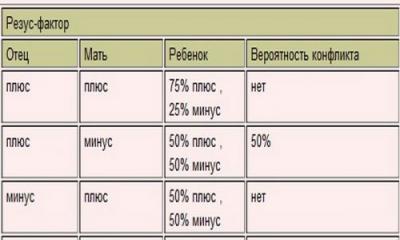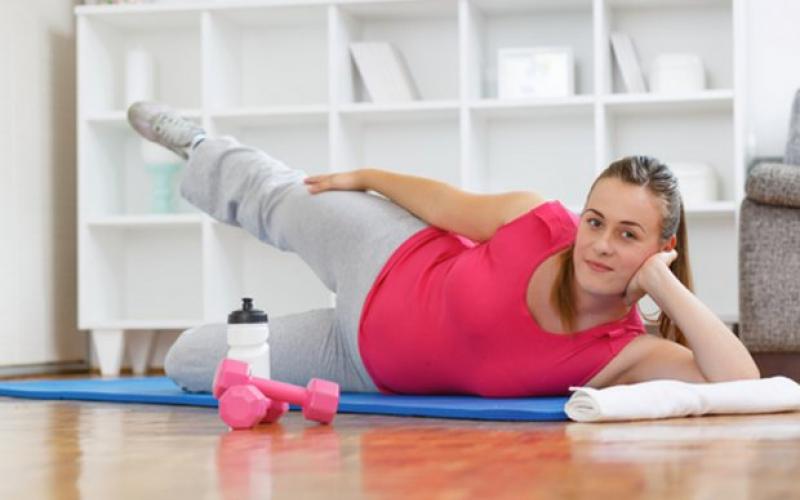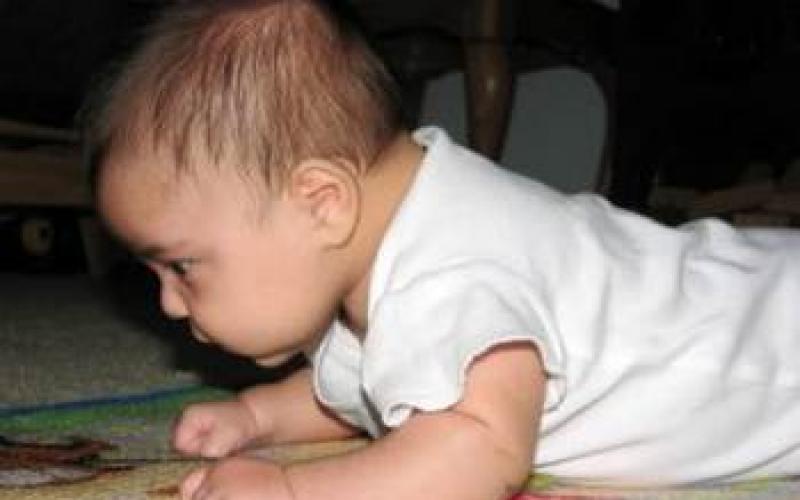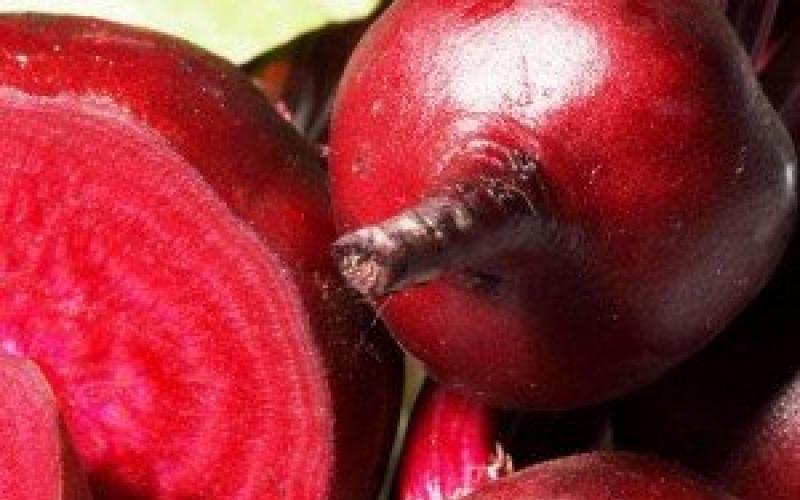Calluses are a problem as old as the world. A huge number of people are looking for a way to get rid of annoying growths. Calluses on the legs not only interfere with walking, causing pain, but are also a purely aesthetic defect, which is especially troubling for women. To quickly cure them, you need to understand the causes of corns.
Table of contents:In fact, a corn is a banal defense reaction of the body to the influence of such an external factor as friction. A local tightening of the skin on the hands is formed during prolonged hard work without the use of protective gloves. Calluses on various parts of the palms are typical, for example, for some athletes, hairdressers, seamstresses, etc.
The main reason for the appearance of calluses on the feet is usually wearing uncomfortable tight shoes.
Immediate causes include:

Obesity and being overweight is one of the factors that increase the likelihood of calluses on the feet.

The appearance of skin growths is often noted with regular walking barefoot on rocky ground. At first, the soles are injured, but then, as they adapt, coarse calluses form on them.
Important: it is necessary to carefully examine single small calluses. Warts are often "masked" under them. In such cases, the usual folk remedies completely ineffective; to get rid of a wart, you need to go to a specialist dermatologist.
We recommend reading:
There are several types of corns, which are actually stages of a single process. A new type of education is being formed in place of the previous one.
Types (stages) of corns:
- wet (watery);
- bloody;
- dry;
- dry with a formed core.

note: The first three types of calluses are familiar, of course, to everyone. Dry calluses on the feet with roots are less common, but they are the most difficult to treat. It is not possible to get rid of them at home.
The first sign that a wet callus may form on the skin is redness and swelling. If the rubbing of this area continues, then a whitish bubble with liquid inside is formed. The appearance of wet calluses on the legs is caused by the accumulation of lymphatic fluid under the outer exfoliated layer of the epidermis. The result is a "classic" blister. Anyone who wears new, insufficiently soft shoes faces a problem of this kind.
 The mechanism of formation of blood corns is similar. The difference is that during friction, a small blood vessel is additionally damaged, as a result of which the contents of the blister acquire a characteristic purple hue.
The mechanism of formation of blood corns is similar. The difference is that during friction, a small blood vessel is additionally damaged, as a result of which the contents of the blister acquire a characteristic purple hue.
Important: the most common complication that forms during self-treatment of corns is wound infection, which aggravates the inflammation. It is necessary to strictly observe the rules of asepsis and antiseptics, that is, thoroughly disinfect an accidentally opened blister.
In some cases, when an infection is attached, the contents of the bladder may become purulent. Such calluses are an unconditional reason for contacting a surgeon.
If adequate measures are not taken in a timely manner, then a dry callus will gradually form in place of the water call. The integrity of the thin outer layer of the epidermis is impaired, and fluid often comes out of the blister. The peel dries to the wound, and new keratinized layers grow in this area over time.
In untreated dry corn, over time, a root can form, penetrating into the deeper layers of the skin. This type of callus is the most painful, since the rod is able to press on the nerve endings even with minimal stress on the foot. The root cannot be removed with improvised means; attempts to remove it lead only to the formation of deep wounds. In this case, you will need specialist intervention.

Important: the formation of a root from dead cells is the fundamental difference between dry calluses on the legs and corns. Visually, such corns are funnel-shaped.
 Treatment of corns of any kind should begin with the elimination of the etiological factor. Stop wearing tight shoes, keep your feet dry and your socks don't wrinkle. Be sure to purchase seamless socks.
Treatment of corns of any kind should begin with the elimination of the etiological factor. Stop wearing tight shoes, keep your feet dry and your socks don't wrinkle. Be sure to purchase seamless socks.
It is advisable to consult a pharmacist before proceeding with the treatment of corns. Not all drugs sold in a pharmacy are really effective.
Medicines for calluses on the feet
When buying external products for treating skin in problem areas, preference should be given to preparations (ointments, patches and creams) based on benzoic or salicylic acid. The best option - the presence of both active ingredients. The combined action of these acids allows you to get rid of calluses and inflammation around it as soon as possible. Salicylates additionally help dry out calluses. For dry calluses on the feet, a softening ointment, the main component of which is urea, helps well.
The most effective pharmacological remedies for calluses include:
- Salipod (patch);
- Compid (plaster);
- Stop Corn (liquid based on celandine extract)
- Super Antimozolinum (cream);
- Bensalitin (salicylic acid ointment).
Important: before applying the listed products, it is recommended to steam your feet in a salt bath and wipe dry!
If conservative measures do not bring the desired result, then you need to seek medical help as soon as possible. With dry rod calluses on the legs, there is no other way out.
Wet and bloody calluses should be protected with a bactericidal plaster until the fluid inside the blister dissolves on its own. It is unacceptable to pierce the bubbles, but if the callus has opened, then the wound and the area around it should be carefully treated with an antiseptic (2% hydrogen peroxide solution, 70% alcohol or furacilin). Then you need to apply an ointment or gel with a bactericidal effect to the wound and bandage it with a sterile bandage (it is better to use an individual package purchased at the pharmacy). The dressing must be removed from time to time to ensure the flow of oxygen to the wound.
Help of a cosmetologist in the treatment of calluses on the legs
Modern medicine has an impressive arsenal of tools that allow you to quickly, painlessly and without visible postoperative scars to relieve the patient from annoying calluses. 
The main physical methods used by cosmetologists to remove calluses on the feet are:
- cryodestruction (freezing of the pathologically altered epidermis with liquid nitrogen);
- laser therapy (the beam helps to burn out even the rods of running dry calluses on the legs);
- diathermocoagulation (cauterization with high frequency electric current).
Note: Cosmetologists also widely use keratolytic compounds (creams) and polishing of keratinized areas of the skin of the legs for the treatment of corns.
Sometimes it is not possible to seek help from a beautician. In this case, time-tested home remedies will come to the rescue in treating calluses on the feet.

To get rid of corns on your own, it is important to follow one rule: the treatment process must be constant and systemic. Most drugs require a fairly long-term use, and frequent drug changes will not lead to the expected therapeutic effect.
We offer you several proven folk recipes for the treatment of calluses on the feet:
- One of the simplest and most affordable folk remedies is compresses made from ordinary bread crumb dipped in a solution of table vinegar. At night, the compress should be bandaged to the corn. As a rule, the blister or growth disappears after a few days.
- You can quickly achieve positive results with oat baths. You need to take oat straw, pour water in a ratio of 1:10, cook for 15-20 minutes, then cool to a temperature that can be tolerated. You need to immerse the sore arm or leg in the resulting broth for 20-25 minutes. Baths should be done until the corns completely disappear.
- Make an incision in the stem of the dandelion and squeeze out the milky juice. The plant helps if used during the flowering period. The juice should be applied to the corn before it dries.
- A regular lemon will help get rid of dry corn. Cut off the top so that a small piece of juicy pulp remains on the zest. In the evening, you need to steam the corn in clean hot water, tie a slice of lemon to it (pulp to the skin) with a regular bandage and leave it overnight. The procedures must be continued until the dry build-up completely disappears.
note: For the treatment of calluses, the most common vegetables that are always at hand - garlic, onions and potatoes can be used.
- Cut the onions into small pieces. Apply them to the cornified corn and cover with plastic wrap. Tie on a compress and leave overnight. In the morning, remove the bandage and try to carefully remove the softened layer of skin (for example, with a fine pumice stone), then thoroughly rinse the problem area with warm water. Sprinkle talcum powder or baby powder on the corn.
- Finely grate 1 medium-sized tomato, and steam the resulting gruel for about 5 minutes over low heat. Cool it down and, applying it to a clean napkin, attach it to the corn, cover it with plastic wrap and tape. The compress should be done 2 times a day for 2 hours. Calluses in most cases disappear within two weeks.
- Peeled raw potatoes must be grated on a fine grater. Apply the resulting gruel to the keratinized area of \u200b\u200bthe skin, cover with polyethylene or special compress paper and bandage tightly. Leave the compress overnight, and in the morning, cut off the softened corn with a sharp instrument, previously boiled and treated with an antiseptic. Then the place where the corn was should be lubricated with baby cream.
- At night, boiled figs or prunes can also be bandaged to dry corn, repeating the procedures to cleanse the skin from growths.
- Dry, painful calluses helps eliminate propolis. It is better to steam the problem area of \u200b\u200bthe skin in the morning, then apply mashed propolis to the keratinized area, fix it with a plaster. In the evening, remove the medicine and scrape off the softened skin with a pumice stone. Repeat the process until the callus is removed.
- A clove of garlic should be pre-baked (or microwaved). Then cut it lengthwise and bandage it over the corn overnight. Remove the bandage in the morning, remove the softened skin, and lubricate the affected area with a fat cream.
Important: do not put garlic on healthy skin areas to avoid the development of chemical burns!
- Fresh garlic can also be grated, and juice can be squeezed out of the resulting mass. Steam the corn on your feet and brush it with garlic juice. The desired effect is achieved, as a rule, after 10-15 procedures, which should be carried out daily. For a compress during treatment, you can use not only juice, but also the gruel itself from grated garlic.
- The resin of coniferous trees is recommended by folk healers as one of the better means from cornified calluses on the legs. Take a hot foot bath, dry your feet dry and apply a thick layer of resin to the calluses. Cover problem areas with clean gauze or a bandage and wear warm socks over the compress. The duration of one procedure is 24 hours, after which the resin must be thoroughly washed off and the procedure repeated. The course of treatment for calluses on the feet is 10 days.
- A thin film on the inside of the eggshell helps with fresh blisters. Apply the wet side of the film to the bubble and cover with a bandage. Using this method allows you to get rid of wet calluses on your feet in just a couple of days!
How to remove calluses on the feet, which cause a lot of suffering, is of interest to many. Calluses are a painful condition with the formation of thickened areas on the skin in places of excessive pressure (hyperkeratosis).
Vivid signs of corns:
- Hard patch of skin, thickened in places.
- Lump on the skin of the leg.
- Flaky, dry skin.
- Soreness of the affected area, pain, redness.
Development risks:
- Rather fragile skin.
- Poor circulation in the legs.
- Diseases of diabetes mellitus.
- Peripheral artery disease.
- Uncomfortable shoes, high heels.
- Poor foot hygiene.
- Bursitis.
- Features of professions.
- Availability .
Formed in places:
- The sole or plantar surface.
- Above the metatarsal arch ("ball" of the foot);
- The outside of the little finger.
- Frequent education is possible between the fourth as well as the fifth toes.
Corns between the toes are whitish, soft in contrast to those formed in other places.
A lot of suffering is brought by plantar calluses without a stem.
Sole corns:

They are thick whitish-yellow or yellow thickenings.
- When you walk, you feel a strong burning sensation.
- It seems.
- The whole foot hurts.
- Legs get very tired.
- Especially annoying in the summer when we go without stockings.
Calluses "papilloma":
- Formed on the sole with deep-seated roots, it sprouts up whole bunches of its sprouts.
- It is quite difficult to get rid of them by cauterization with salicylic acid.
Get rid of uncomfortable shoes. Avoid standing on your feet with weights in your hands.
Corn "bunion":
It is called in another way - a bone on the leg. This is a callus on the joint of your toe called the big toe. The reason for the appearance is tight, uncomfortable shoes.
No cure will help until you change your shoes. If this is not done on time, surgery will be required.
Even after that, if you put on your old shoes, your suffering will resume.
Calluses - skin thickening, a natural defense mechanism that strengthens the skin in areas of friction, excessive pressure.
Individual anatomy of the legs, deformity of the foot, leads to the formation of bony protrusions on the legs.
Shoes that are too tight, narrow, uncomfortable and rubbing at certain points are a common cause of blisters.
The peculiar gait also has an important impact on this phenomenon.
It is especially common in people over 65.
What malfunctions in the body can the growth of corns tell you:

- When calluses form around the heel, it speaks of your changes in the joints.
- With the formation of calluses on the outside of the foot, spinal problems.
- The callus passes from heel to foot - intestinal function is disrupted.
- Under the little toe of the foot is formed when the liver, or heart, is malfunctioning.
- Grabs the little finger to the other fingers - nervous diseases
- Calluses formed on the outside of your big toe.
How to remove a callus on your toe:
Pharmacy preparations containing salicylic acid. It dissolves the thick layer of corn (keratin). Products made from it are absolutely safe and are available in the form of: applicators, drops, patches.
It is contraindicated for thin skin, with poor circulation.
It is forbidden to cut corns at home, there is a risk of getting an infection. In such cases, antibiotics will already have to be treated.
In order to get rid of corns with a peculiar gait of a person, you will have to visit an orthopedist to use special devices for redistributing the weight of pressure on the feet.
Special insoles are available for pain relief.
Treatment in a medical institution with liquid nitrogen takes only a few minutes, dead cells are removed and that's it.
Calluses on the legs are burned out with a laser to the lowest root, the growth of formations stops.
Salipod plasters help well.
In literally one or two days, everything heals with the use of Viferon ointment. You need very little of it, the result is magical.
How to remove calluses on the feet at home, living conditions:

Decoction of baked onions:
Bake the onion in the oven, boil it in a little water. Cool slightly, rinse sore spots.
Prunes, milk:
Steam prunes in milk, apply hot to the corns. The cooled agent is replaced with a hot one several times. Calluses soften, pass.
Flax-seed:
Steam one glass of flaxseed in a liter of boiling water. We insist one hour, pour it into a basin, lower your legs for half an hour. Enough 4 times.
Propolis:
Take a piece of propolis, heat it up. Apply to steamed legs, bandage. Keep for a whole week. Then just remove the corn.
Dandelion juice:
Simply rub dry corn with dandelion juice.
Gorokh:
Soak your feet in cool, preferably cold water for 5 minutes. Wipe dry, apply thicker dry peas chewed into a gruel in your mouth. The procedure is carried out once / day.
Coniferous resin:
Apply a small piece of resin to the steamed corn, cover with adhesive plaster. Change once / day. It takes 3 days.
Insulating tape :
Deep calluses with rods are removed by gluing an electrical tape from an electrical wire to a sore spot. She pulls everything out from the inside. When it dries, apply fresh.
Raw veal:
For the treatment of calluses with rods, raw veal soaked in wine vinegar is used. Small pieces are applied to calluses, changed up to three times / day for a fresh piece. The corn is removed painlessly.
Raw potatoes, honey:
Grated potatoes take only 100 grams, add 1 teaspoon of honey, apply on the corns. Remove after 2 hours, repeat up to 3 times / day.
Prevention of the formation of corns:

After taking a bath, dry your feet thoroughly, watch out for dryness between your toes, so you will prevent diaper rash.
Use a pumice stone, then wipe with petroleum jelly.
It is necessary to take foot baths using sea salt for this: we take one kg of salt, ten liters is better than hot water. Wipe your feet thoroughly again, including the interdigital spaces, dry. Lubricate the soles of the feet with Vaseline.
Very well relieves fatigue, gouty changes in the joints foot bath from potato peelings. Its duration is up to 30 minutes.
Rinse with clean water, grease with castor oil.
Wear well-fitting, comfortable shoes exactly to size, and treat new ones with antiseptics from the inside to avoid allergies.
Avoid shoes with pointed curves, high heels.
Get pedicure done regularly by a specialist to avoid the growth of calluses.
Try to walk more barefoot in the summer, better on the ground and grass.
You can write a lot about how to remove calluses on your feet. There is enough information for the article, I try to write recipes that I heard about myself, I tried.
For example, I can say for sure that Viferon ointment helped me incredibly. Get medical treatment.
I am always waiting for you on my site.
Watch a video on how to remove calluses on your feet at home:
How to remove dry corns? This question worries everyone who is faced with such an unpleasant phenomenon. When such neoplasms occur, a person may experience pain and discomfort when walking. Such sensations are especially unpleasant if dry calluses have a core. There are plenty of reasons for their occurrence. These can be both external factors and problems with the functioning of organs and systems in the body.
What types of dry calluses are there?
Before answering the question: "How to remove dry corns?" - it is worth understanding their varieties. At the moment there are:
- Callus is a closed, dense growth. When walking, a person does not experience discomfort. However, mild painful sensations often occur when pressing on the corn. Most often localized on the heels, lateral and plantar surfaces of the foot.
- Callus. Callus in this case is an open lump on the skin. From the side it resembles a small wound. Also, the callus can resemble a bubble filled with liquid. When pressing on the damaged area, the person may experience pain. Most often, such a callus is formed on the interdigital spaces.
- Callus with a rod. This corn has a cone-shaped root. It goes deep under the skin. In the center of the callus, a translucent zone with increased density or with a rod is noticeable. When walking, a person experiences not only discomfort, but also pain. Most often, such a callus is formed on the lateral surface of 2-5 toes, as well as on the back of the interphalangeal joints.
- Fibrous and vascular. Such a callus is extremely rare. With vascular callus, a blood vessel can pass through its core part, and with fibrous callus, dense hyperkeratosis develops, which looks like a honeycomb.
Since it is not easy to remove dry calluses, it is worth visiting a specialist with a narrow profile. Some calluses cannot be removed at home. In this case, hardware therapy for growths is prescribed.
Internal reasons
How to remove dry corns? To begin with, it is worth determining the main cause of callus. Internal factors include:
- changes that occur in the body upon reaching a certain age: a tendency to damage the skin and loss of their elasticity, excessive loss of moisture, etc.
- diabetes;
- dysfunction of the gastrointestinal tract;
- flat feet or poor posture;
- rheumatoid arthritis;
- increased sweating of the legs;
- hypovitaminosis and vitamin deficiency;
- neurological pathology;
- bone spur;
- obesity.
To remove dry calluses on your toes or feet, you need to address the underlying cause. Only after that you can start performing cosmetic procedures and removing callus. The risk group also includes those who have impaired circulation in the lower extremities and a weakened immune system.

External factors
Dry calluses are often caused by external factors. These include:
- walking on pebbles and gravel without shoes;
- doing some sports, such as ballet, gymnastics, jogging, and so on;
- wearing synthetic socks and stockings;
- uncomfortable and tight shoes that chafe feet and toes;
- wearing high-heeled shoes;
- wearing shoes on bare feet.
Also, before going to bed, you need to steam your legs. For such a procedure, it is recommended to steam the skin of the feet in a soda solution. He prepares simply. A tablespoon of soda must be dissolved in two liters of water. Feet should be soared for 15 minutes. After that, propolis should be applied to the problem area, fixed with a plaster and left overnight. It is recommended to carry out such therapy for seven days.

Garlic application
Not everyone knows how to remove dry corn with folk remedies. At the same time, there are plenty of alternative medicine recipes. You can get rid of dry calluses on your feet with garlic. For this, the vegetable must be peeled. It is recommended to grind a clove of garlic and mix with a teaspoon of vinegar essence. Flour must be added to the resulting mass. A teaspoon will be enough.
The components need to be mixed well to get something like a dough. From the resulting mass, it is necessary to form a cake. It should be applied to the problem area and securely fixed with a plaster. The compress can be removed only after two days. After that, it is worth carefully removing the softened corn.

Potatoes to help
How to remove dry corn on a toe with ordinary potatoes? This vegetable is recommended for making compresses. To do this, the potato tubers must be peeled, washed thoroughly, and then grated on a small grater. The result should be a gruel. It must be applied to the problem area and left overnight. Potatoes soften dry fabrics well and allow them to be removed carefully. It is worth noting that the gruel from the root vegetable draws out interstitial fluid well, so it can be used for wet calluses.
Aloe
Aloe will help deal with dry calluses. To begin with, the leaves of this plant must be cut off and placed in the cold. This will improve the flow of juice. After that, the aloe leaf should be cut and applied to the problem area with the cut. You can fix it with ordinary plastic wrap. It will also create a greenhouse effect. In conclusion, it is recommended to secure the compress with a bandage and put on a warm sock. The product should be left overnight. In the morning, the damaged skin can be removed.
Regular tomatoes
You can make a compress from tomatoes. For this, it is recommended to use grated vegetables. The resulting mass should be applied to the problem area, wrapped with plastic wrap, and secured with a bandage. Finally, put on a warm sock on your leg. The compress should remain overnight. In the morning it can be removed and dry skin removed.
Lotions are recommended to be done daily for 7 days. The course of therapy can be increased if necessary. Only such a treatment regimen will remove the callus rod. As a result of the therapy, the skin of the feet should become healthier, cleaner and softer.
Vinegar essence
To remove callus with a rod, you can use vinegar essence. A patch is required for the procedure. It must be glued around the corns. After that, you need to drop a drop of undiluted vinegar essence onto the area where the callus root is visible. Such therapy allows you to get a positive result after several sessions.
Now you know how to remove dry corn with a core. However, it is worth using such funds with caution so as not to damage healthy skin.

Celandine juice against dry corns
Celandine juice is another popular traditional medicine that helps to cope with calluses. Most often, such a drug is used to combat papillomas and warts. It is recommended to apply celandine juice to the area where the root of the corns is visible. In this case, the skin around the callus must be protected with a plaster.
We make baths
Since it is unlikely that it will be possible to remove the core of dry corn with conventional means, water procedures can be carried out. Baths with a soap and soda solution are considered ideal. This procedure removes dry corn with a small core.
To prepare the solution, you need to heat the water and add a little soda and soap to it. The duration of the procedure is at least half an hour. After taking such baths, it is recommended to remove corns with a pumice stone. If the root is not very long, then after 5-10 procedures it can fall out on its own.
You can also take mustard baths to combat dry calluses. To do this, dilute the powder in hot water. The duration of the procedure is at least half an hour. Course - up to 10 sessions. After the specified number of procedures, a small rod can come out on its own.
In conclusion
When choosing a method of dealing with dry calluses, it is worth considering that any remedy may have certain contraindications and side effects. Therefore, it is recommended to consult with specialists before using alternative medicine preparations. Self-medication in this case can lead to undesirable consequences and worsen the condition of the skin. Therapy must be performed without fail. It is not recommended to start the process, since it is easier to remove the callus root at the initial stage, until it has grown.
Many people develop dry calluses with a stem on their feet. They protect the skin from mechanical stress, but they not only spoil appearance legs, but also bring pain and discomfort when you touch them. Consider what it is, where it comes from and how to get rid of dry calluses with a rod on the legs conservative, medication and folk methods.
What education looks like
A dry corn with a rod is a skin growth in the epidermis, which often appears on the legs. Visually, it looks like a solid grayish or whitish lump with a depression in the center. It is there that its root is located, it can go into the deep layers of the skin, which will seriously complicate treatment. There are many photos on the Internet showing the appearance of the neoplasm.
The pathology occurs in both adults and children. Usually dry callus appears with a rod on the toe or between them, localization on the heel occurs. In rare cases, it forms on the hands.
Symptoms and Causes
Wet calluses are easy to remove with the right, timely treatment, but as they harden and dry bumps form, treatment becomes more difficult and takes longer.
The main factors contributing to the appearance of calcification:
- Skin damage (wounds and splinters). When an infection or foreign object gets in, the body tries to create a protective layer of hard tissues that can transform into a corn core;
- Skin fungus on the legs;
- Keratinization of a common blister. In the absence of timely treatment, the usual growth can dry out, and under the constant influence of external negative factors (friction, squeezing), the internal root of the callus appears. Dry calluses with a shaft on the little toe are common.
When the first signs of stubble callus appear, it is recommended to start treatment immediately.
The characteristic signs of the disease:
- Painful sensations. Such calluses grow into deep layers of soft tissues and injure them, causing discomfort and discomfort;
- Core nodules are more often localized in the front of the soles of the feet: on the pads of the fingers or under them. Less commonly, they occur on the heels;
- The gait changes. Dry callus forces a person to shift the center of gravity when walking, which can damage the musculoskeletal system.
- At the initial stage of the development of the disease, itching and tingling in the affected area is characteristic. When the upper layer of keratinized skin is removed, a small reddened area remains on the damaged area - the core of the callus, which continues to deliver painful sensations.
If dry callus with a core on the foot appears frequently, it is recommended to consult a doctor, perhaps the cause of the appearance is an incorrect load on the foot. Your specialist will write corrective orthopedic insoles to help relieve tension from your foot.
Treatment methods
Dry corn requires long-term treatment, in order to eliminate it at home, it is necessary immediately, when the first symptoms of the disease appear, to begin therapy, before it grows into the deep layers of the skin.
An old corns requires more serious attention. To eliminate it, it is better to contact a specialist, he will tell you how to remove dry calluses with a rod on the toe or on the foot. With the wrong treatment, you can only make the problem worse.
Clinical removal procedures
- The doctor can remove the build-up by drilling it out with special cutters. It is necessary to completely cut out the keratinized tissue to prevent the occurrence of relapses. Then, antibiotics and antifungal drugs are instilled into the resulting wound, and after 3-4 days it will be possible to completely forget about the growth - all the discomfort disappears.
- with a rod is equally effective for all types of corn neoplasms, regardless of the age of its appearance.
The procedure takes several minutes, usually one, less often two sessions is enough to completely eliminate dry calluses. Heat the laser beam immediately coagulates (cauterizes) the tissue, thereby minimizing the risk of infection or pathogenic bacteria. This technique is suitable even for sensitive skin, the device is adjusted to the desired depth of action, which makes it possible to prevent damage to the healthy skin area. - You can remove the rod of dry corn, and then treat the affected area with a special antiseptic solution. The procedure is performed by a beautician, no preparation is required. Most often, large neoplasms are treated with this method. After the manipulations, it is important to take care of the treated skin area so as not to infect.
Medicines
If it is not possible to consult a doctor, it is allowed to try to solve the problem yourself. You can cure dry callus with a rod on your toe at home with the help of various medications and folk recipes... They are affordable and simple, but it can take a long time to treat the disease.
A wide range of remedies for corns and calluses is presented in pharmacies: creams, ointments, gels and special plasters. When choosing any of these remedies, check out the contraindications.
- Salicylic acid is the main component in keratolytic medicinal ointments, gels and liquids for eliminating corns. It helps to soften the thick stratum corneum, but they must be used with caution, products with acids in the composition can damage healthy skin. Therefore, an ointment for dry calluses with a rod is applied only locally.
- to get rid of dry corns, they are soaked in special solutions that help soften. The most commonly used exfoliators are salicylic acid and oils to soften the skin. The plaster is applied to clean, dry feet, and the course of treatment lasts 2-14 days, depending on the initial condition of the affected area.
The most popular remedy for removing calluses with a core is the Russian-made Salipod plaster. It is impregnated with sulfur, salicylic acid and special emollients to prevent dryness. It is not used on healthy skin and open wounds, pregnancy and taking drugs for cancer and diabetes are also contraindications. Also, foreign-made plasters are used.
Traditional medicine recipes
Most patients are interested in how to remove dry corn with a core inside with folk remedies. To do this, you must first soften the skin growth and only then use traditional methods.
- Foot baths
Soap-soda solution is used at the initial stage of the disease, when the root still does not go deep into the epidermis. For 1 liter of hot water, there should be one tablespoon of grated soap and soda, it is necessary to keep your feet in this mixture for at least 40 minutes. The course of treatment is carried out until the complete elimination of the corns.
Salt baths are used daily, after which pumice is used to remove the top layer of the build-up. Then wipe the leg and apply camphor alcohol. For 1 liter of water there is at least 1 tbsp. salt.
- Home compresses
- Mix finely grated onion and potatoes, apply to the corn, wrapping it in plastic wrap. In the morning, remove the corn with a pumice stone and apply a greasy cream;
- For 2-5 days, apply a slice of lemon peel with pulp to the corn on the steamed leg. Then, after steaming the skin, treat the growth with a pumice stone or a foot file.
- On dry steamed skin, apply a mixture of propolis and salicylic acid, cover with a plaster and leave for 2 days, then use a pumice stone to wipe off the growth.
Prevention
Dry calluses with a stem can take a long time to heal, and they themselves bring pain and discomfort. There are a few simple rules that will help protect yourself from the appearance of a callus:
- Compliance with personal hygiene - keep your feet clean, do not allow infection to enter open wounds;
- Choose comfortable shoes that will not chafe and squeeze the foot, socks should be made of natural materials and also in size;
- Remove the stratum corneum with a pumice stone, use softening and moisturizing creams;
- Timely treatment of blisters prevents dry calluses from developing.
If you notice that you have dry calluses with a rod on your feet, then it is better to take action right away. Most often, they appear on the site of untreated water blisters, with prolonged aggressive action on the skin. There are several ways to get rid of dry calluses with a rod on your feet, some methods are used only by qualified specialists, while other methods will allow you to eliminate the disease at home. The latter are recommended to be used only on new, recently appeared skin growths.
One of the leading causes of calluses on the heels is tight, uncomfortable shoes... With constant squeezing, the skin dies off and becomes denser. As a result - a corn.
Circumstances accompanying the appearance of a callus may be:
- flat feet;
- jogging;
- the presence of skin diseases;
- increased sweating on the legs.
Corns are very common in overweight people..
Kinds
Water type corn

To prevent the skin under the bladder from drying out, you need to protect it with a bandage. Did the bubble burst?
Treat the wound with an antiseptic and cover with adhesive tape.
Salicylic 2% ointment is suitable for disinfection and healing.... An adhesive plaster works best with or. They are designed to protect against pathogens.
If calluses appear all the time, be careful with the choice of shoes. If nessesary, use pads to prevent chafing of feet and heels.
Dry corn
It is better if the treatment is carried out in a hospital. Apply the remedies carefully. Avoid contact with clean skin areas. Almost all ointments and creams contain salicylic acid. It softens the hard skin.
The most famous drugs for the treatment of dry calluses:
- Super Antimozolinum;
- Cream "5 days".
The creams also contain lactic acid, celandine.
- "Effect" cream;
- Stopmozol with celandine extract;
- Corn.
Levomekol can be applied to dry corn, sealed with adhesive plaster.
Rod growths

It is rather difficult to cure because of the deeply ingrown rod. The pharmacy can tell you which cream or ointment is more effective.
Ointments and creams apply the same as for dry corn... They well soften rough skin and allow it to be removed after processing.
No cream is needed after application. The skin is sufficiently hydrated.
The period of continuous wearing of the patch is 2-3 days. There are plasters with a wound healing effect.
If ointments, creams and plasters did not help, then ask the surgeon.
Do not try to remove the corn shaft yourself by cutting... A direct path to infection.
How to cure quickly?
Calluses on your feet do not go away, treatment: quick release pharmacy products Does not help? Use clinical procedures.
There are three main methods for surgical intervention:
- Grinding... Practically painless. The keratinized growth is polished until the compacted skin... But the rod has not been removed. Approximately 3 months and callus grows again. You can view pedicure devices for removing corns in our publication.
- ... Many people choose this method. The laser beam will destroy the rod without hitting the tissues nearby. Forever and ever. The rod is completely vaporized. Contamination is 100% excluded. The high temperature beam will disinfect.
- ... Liquid nitrogen is used. Freezes the affected tissue. Of the minuses, the procedure is quite painful.
Folk recipes
Granny's recipes for removing calluses may be good.
Let's see how to quickly cure a callus on the leg using folk methods and is it possible to achieve the best result in a minimum of time?
Wet corn
- A solution of sea or table salt in trays for about 20 minutes daily will allow you to forget about calluses. After the bath, treat the corn with iodine.
- To painlessly remove the blister on the calluses, apply a compress from the aloe cut along the leaf overnight. Bandage on top.
- If the bladder is already damaged, grease the places with a tomato crushed into a gruel with the addition of aloe juice.
Dry corn
- A compress made from boiled and mashed potato peels and flax seeds perfectly helps to soften the keratinized skin.
- You can apply a tablespoon of salt, baking soda, and apple cider vinegar to dry skin overnight with a bandage.
- A flat cake made of flour, a teaspoon of vinegar and a clove of garlic crushed into gruel will help soften dry corn.
- Half an onion soaked in vinegar for 24 hours, put on the heel and bandaged overnight, helps a lot.
Root callus
The callus is painful, more than the rest. And even in this case, many prefer treatment by the "grandmother's" method, fearing a visit to the doctor.
Effective recipes on how to quickly remove calluses on the leg:

When should you see a doctor?
In any case, when corns appear, it is better to go to the clinic. Getting expert advice is safer than experimenting with compresses and baths.
For the following symptoms, you should immediately consult a doctor:
- the appearance of cracks and blood on the corns;
- if ;
- if the corn starts to turn blue;
- when suppuration appears.
Choose comfortable shoes carefully. Monitor the condition of your feet. Apply ointments and creams to care for your feet. Visit the clinic periodically. If these conditions are met, you will forget about calluses forever.
Watch a video on how to treat calluses on your feet.







